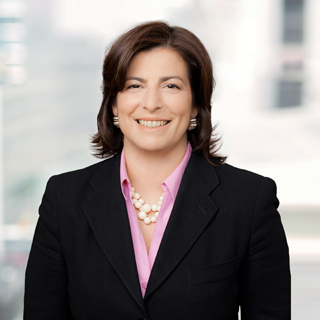
Dear Friends and Colleagues,
I’m pleased to report that today, September 29, the Edna McConnell Clark Foundation is launching an open and competitive search and selection process to identify and advance 8-10 high-performing, youth-serving organizations in our new role as an intermediary for the Social Innovation Fund (SIF). As I wrote in my July 22 letter, EMCF is honored to have been chosen by the Corporation for National and Community Service to participate in this unprecedented public/private partnership to expand evidence-based programs addressing some of our nation’s most pressing and intractable social challenges.
EMCF will match the $10 million grant we have been awarded dollar for dollar with funds from our endowment in order to help nonprofits reach thousands more economically disadvantaged young Americans with proven programs that can give them the support, the skills and the motivation they need to stay in school, get a job, avoid risky behaviors such as teen pregnancy and crime, and become productive, independent adults. Our grants will provide upfront growth capital to help recipients build their evidence base and their organizational capacity to prepare for greater public and private investment that can propel them to scale and sustainability.
We invite youth-serving nonprofits throughout the nation to review the SIF Online Application and other information posted on our website and, if they meet the eligibility requirements, to submit an application before the deadline of November 1, 2010.
We expect these grants to be multi-year and in most cases to be for a minimum of $2 million annually. To ensure that these investments benefit grantees directly, EMCF is donating all our administrative costs as well as those of our strategic collaborators in the SIF: MDRC, a prominent developer and evaluator of interventions to improve the lives of low-income Americans, and the Bridgespan Group, a leading provider of business planning and capacity-building services to nonprofits.
Our search for SIF grantees will be nationwide, focusing on organizations that serve the most disadvantaged youth and are active or plan to expand in localities where widespread poverty reduces their chances of becoming successful adults. We are particularly interested in programs that can benefit philanthropically underserved communities, including rural areas. Initially we are placing a priority on nonprofits operating or planning to operate in the states of North and South Carolina, Oklahoma, and California, where The Duke Endowment, the George Kaiser Family Foundation, and Tipping Point Community, respectively, have committed up to $15 million over three years to help SIF grantees that meet their own grantmaking criteria raise the matching funds required by the SIF. Other geographical priorities will likely emerge as we conduct our selection process and engage additional co-investors.
SIF grantees will be responsible for meeting their federally required 1:1 match. Because the burden of this match is so great, EMCF will extend the capital aggregation approach we have developed over the past few years and work with grantees to find additional co-investors that can ease it. In addition to the $15 million in commitments mentioned above, the Open Society Foundations has agreed to recommend approval of grants totaling up to $2 million to support SIF grantees, subject to its grant requirements. We are grateful to the co-investors that have joined us, we hope to engage more national, regional and local partners in the coming months.
Starting in November, EMCF will adapt the core elements of the investment approach we have tested for more than a decade to a national competition for SIF grants that is open and transparent. The competition will consist of two phases: application review followed by rigorous due diligence and final selection. We will present recommendations for SIF grants to our board of trustees in March 2010, and announce them shortly thereafter. We are committed to periodically updating the general public about our selection process—not only its results but also what we are learning, our challenges and reflections. Our goal will be to share knowledge that we think will benefit others while at the same time ensuring that we “do no harm” to potential applicants.
We applied back in April 2010 to become an intermediary because we believe the SIF has the potential to become a catalyst for “scaling what works” by encouraging the public sector and the nonprofit capital markets to direct more resources to the most promising and effective social programs. Today, we feel we are closer than ever to meeting this goal, and we are grateful for the opportunity to work with the Corporation for National and Community Service, other SIF intermediaries, the grantees we select and the co-investors who join us to bring this vision to life.
As always, we welcome your thoughts, suggestions and comments.
Sincerely,
Nancy Roob




